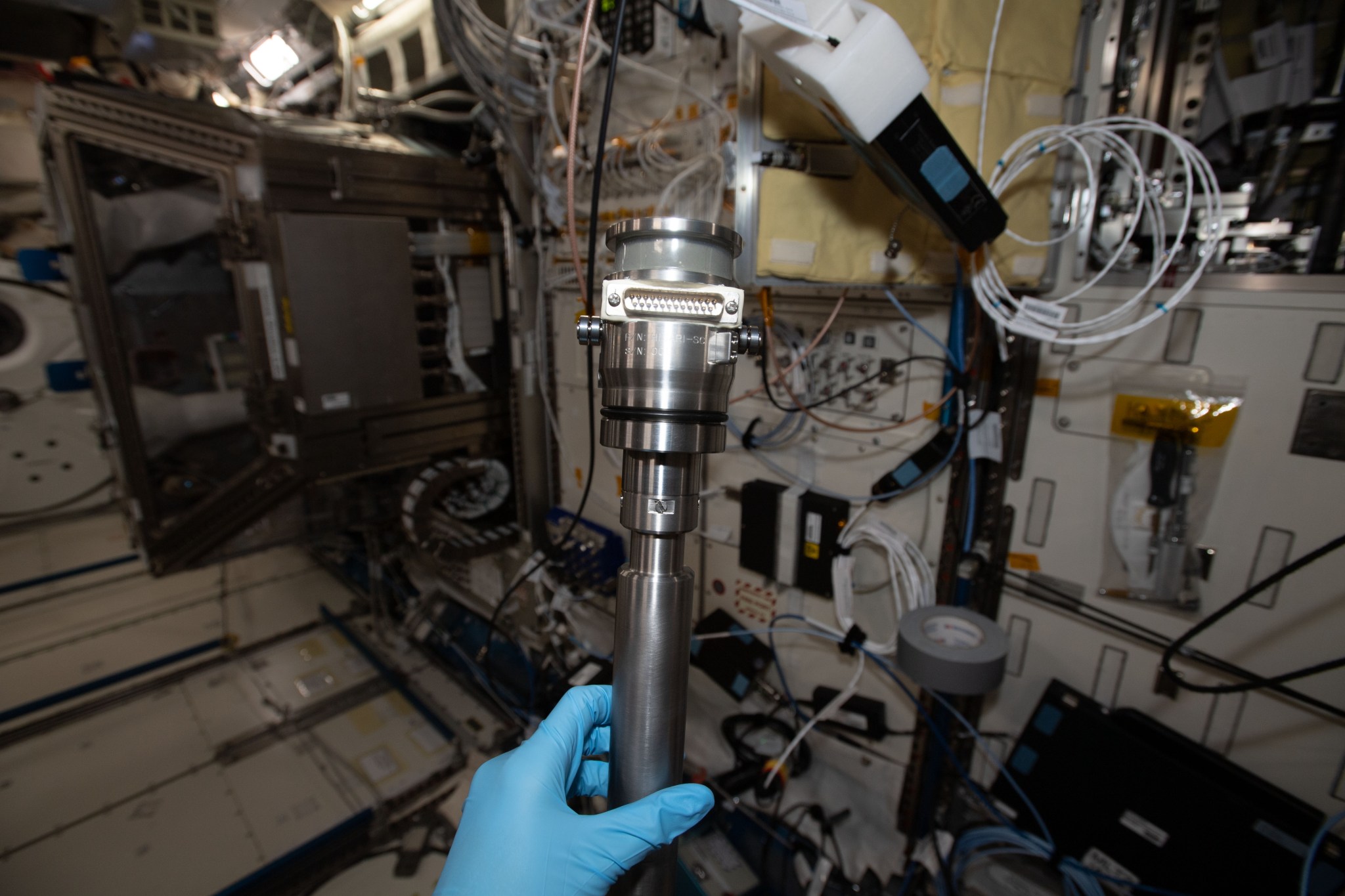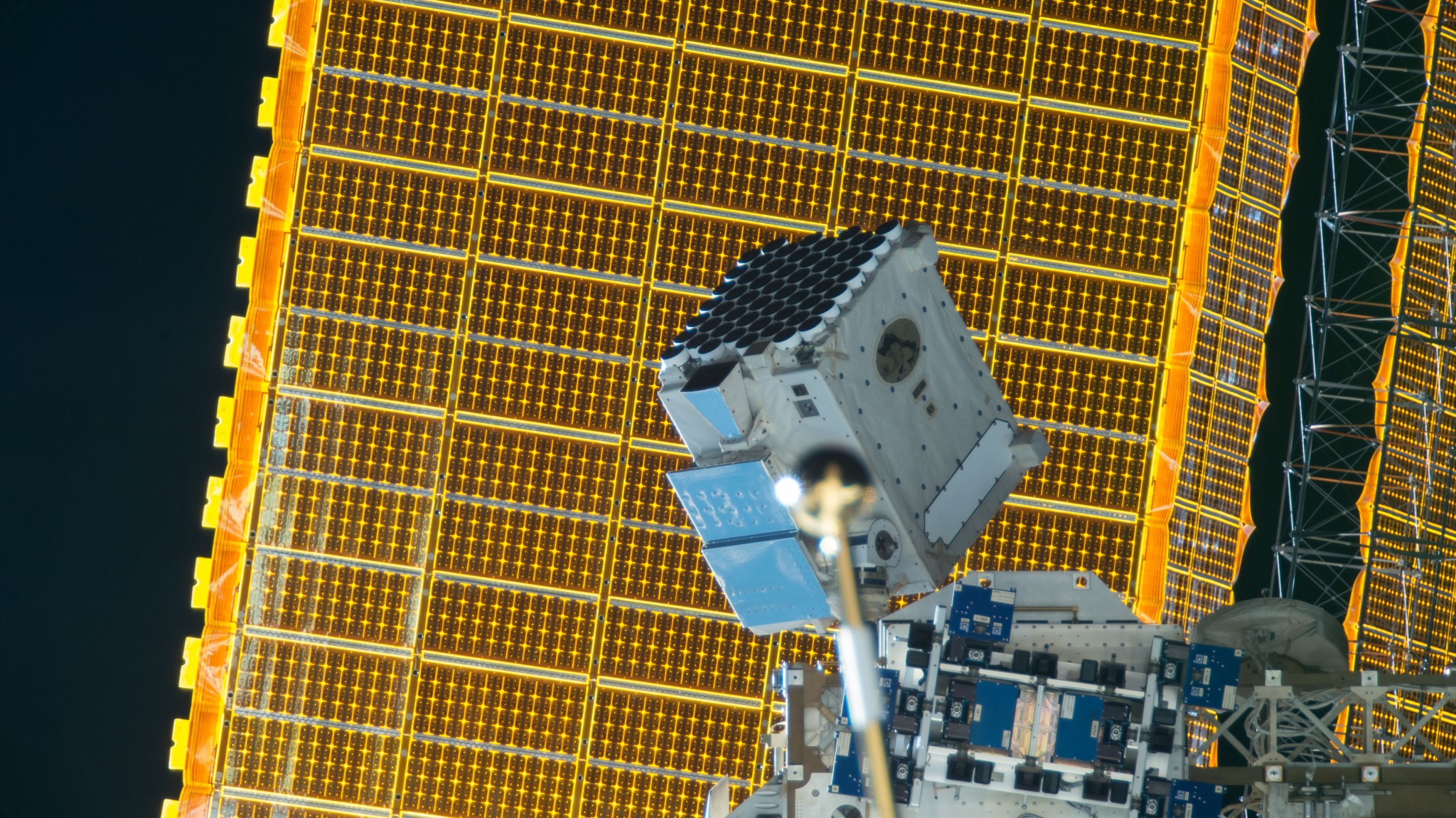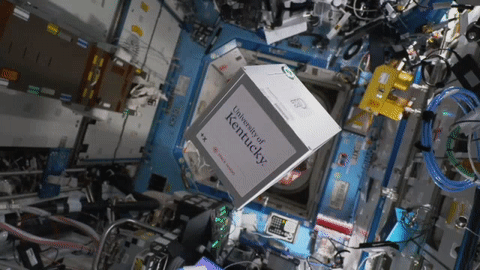[Lea la versión en español de este artículo]
Crew members aboard the International Space Station conducted scientific investigations during the week of March 21 that included testing a method of producing semiconductor crystals, analysis of how microgravity affects a person’s ability to grip and manipulate objects, and pairing two exterior observatories to respond to celestial events.
The space station, continuously inhabited by humans for 21 years, has supported many scientific breakthroughs. A robust microgravity laboratory with dozens of research facilities and tools, the station supports investigations spanning every major scientific discipline, conveying benefits to future space exploration and advancing basic and applied research on Earth. The orbiting lab also provides a platform for a growing commercial presence in low-Earth orbit that includes research, satellite services, and in-space manufacturing.
Here are details on some of the microgravity investigations currently taking place:
Higher quality crystals
Hicari, an investigation from the Japan Aerospace Exploration Agency (JAXA), demonstrates a method to produce high-quality crystals of Silicon-Germanium (SiGe) semiconductor material using the Japanese Experiment Module Gradient Heating Furnace (GHF). The investigation continues a series of tests begun in 2013. SiGe crystals show potential as materials for electronic devices that are superior to silicon and could reduce energy consumption. This crystal production method could support development of more efficient solar cells and semiconductor-based electronics. During the week, crew members loaded Hicari sample cartridges into the GHF to initiate runs of the investigation.
Gravity and gripping
The way humans grip and manipulate objects evolved in the presence of gravity and relies on various cues, including the weight of an object and concepts such as “up” and “down.” In microgravity, these forces and cues change. The ESA (European Space Agency) GRIP investigation studies how spaceflight affects the force of a person’s grip and the movements they use to manipulate objects. Results could help identify potential hazards for astronauts as they move between gravitational environments, such as landing on the Moon or Mars. The study also could contribute to the design of touch-based interfaces such as remote control used on future exploration of deep space or planets and systems used on Earth. Crew members conducted sessions for the investigation during the week.
Coordinating celestial observations
OHMAN coordinates observations between two external payloads: MAXI, a JAXA facility that continuously monitors the sky for X-ray sources, and NICER, a NASA facility that studies neutron stars. Black holes, neutron stars, and white dwarfs sometimes suddenly grow brighter as they ingest matter from a neighboring star. These events include important information about the nature of these objects, but often last only minutes or hours and may be missed by observers. Now, when MAXI detects a suddenly brightening object, OHMAN alerts NICER, which can aim right at the object for closer observation. This could help astronomers learn more about the physics of these objects, leading to a better understanding of the origins of matter and energy in the universe. Crew members connected cables to enable future operations of OHMAN during the week.
Other investigations involving the crew:
- Space Tango – Cubelab Satellite Demonstrator tests attitude-control technology for small satellites that is energy efficient, lightweight, and not subject to friction wear. This technology could enhance the attitude maneuvering capabilities of small satellites in support of future space missions.
- Wireless Compose-2, an investigation from ESA, demonstrates a wireless network infrastructure for sensor monitoring and data transmission to support scientific experiments in microgravity. Results could contribute to development of new technologies for monitoring the health of astronauts and people on the ground and hardware that provides more precise control of free-flying robots.
- SQuARE studies objects and built spaces and how crew members use them over time. Results could contribute to better design for future spacecraft and habitats.
- Space Biofilms characterizes the structure and gene expression of biofilms that form in space by analyzing a fungal species grown on different materials. Biofilm formation can cause equipment malfunction and human illnesses and could be a problem on future long-term human space missions.
- ESA’s Acoustic Diagnostics tests the hearing of crew members before, during, and after flight to assess the possible adverse effects on human hearing of noise and the microgravity environment aboard the space station. Long-term exposure to noise could become an issue on longer-duration flights.
- Food Physiology examines the effects of an enhanced spaceflight diet on immune function, the gut microbiome, and nutritional status indicators to document how dietary improvements may enhance adaptation to spaceflight.
- Touching Surfaces, an ESA investigation, tests antimicrobial surfaces to help determine those most appropriate for future spacecraft and habitats as well as for terrestrial applications such as public transportation and clinical settings.
- ISS Ham Radio provides students, teachers, parents, and others the opportunity to communicate with astronauts using amateur radio units. Before a scheduled call, students learn about the station, radio waves, and other topics, and prepare a list of questions on topics they have researched.
For daily updates, follow @ISS_Research, Space Station Research and Technology News or our Facebook. Follow ISS National Lab for information on its sponsored investigations. For opportunities to see the space station pass over your town, check out Spot the Station.
John Love, ISS Research Planning Integration Scientist
Expedition 66






























